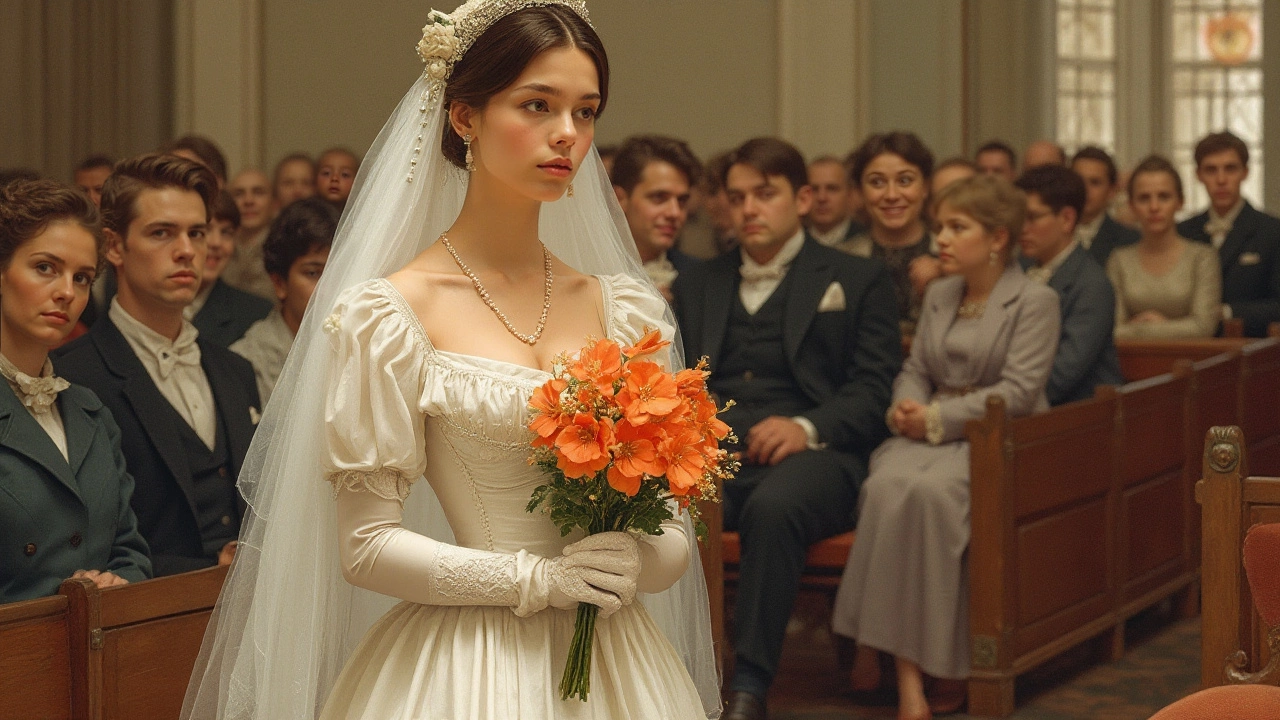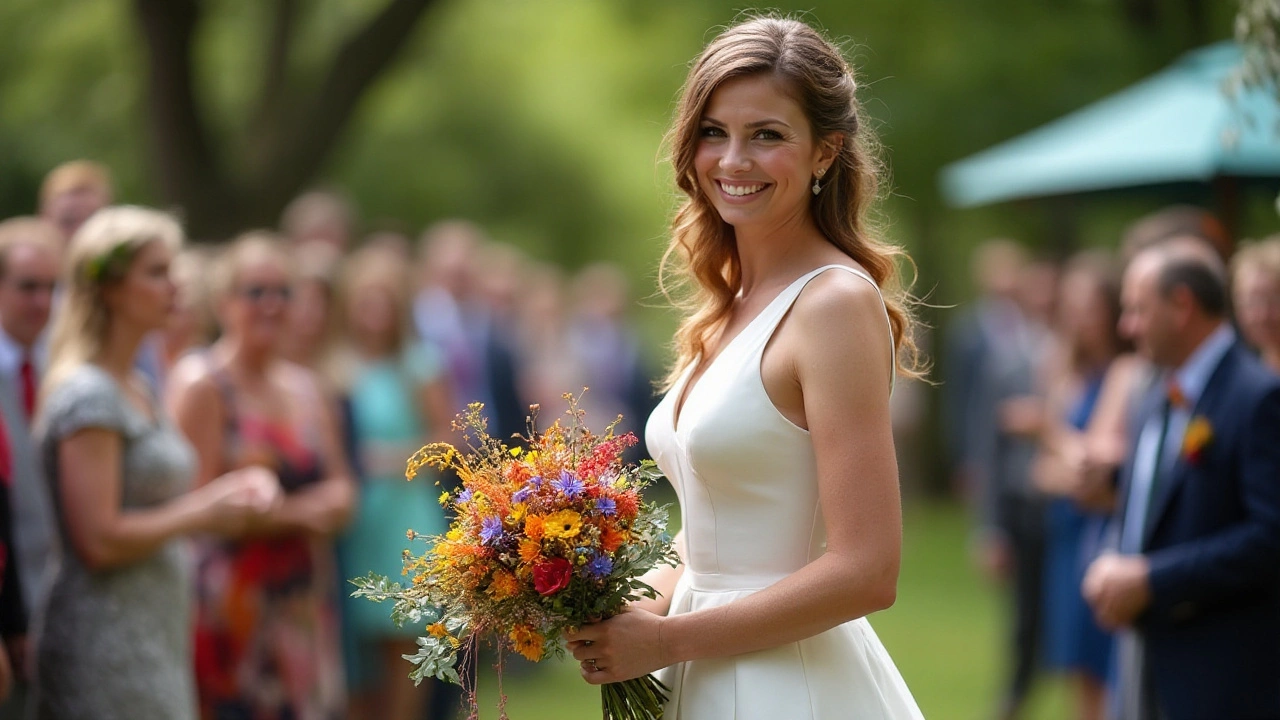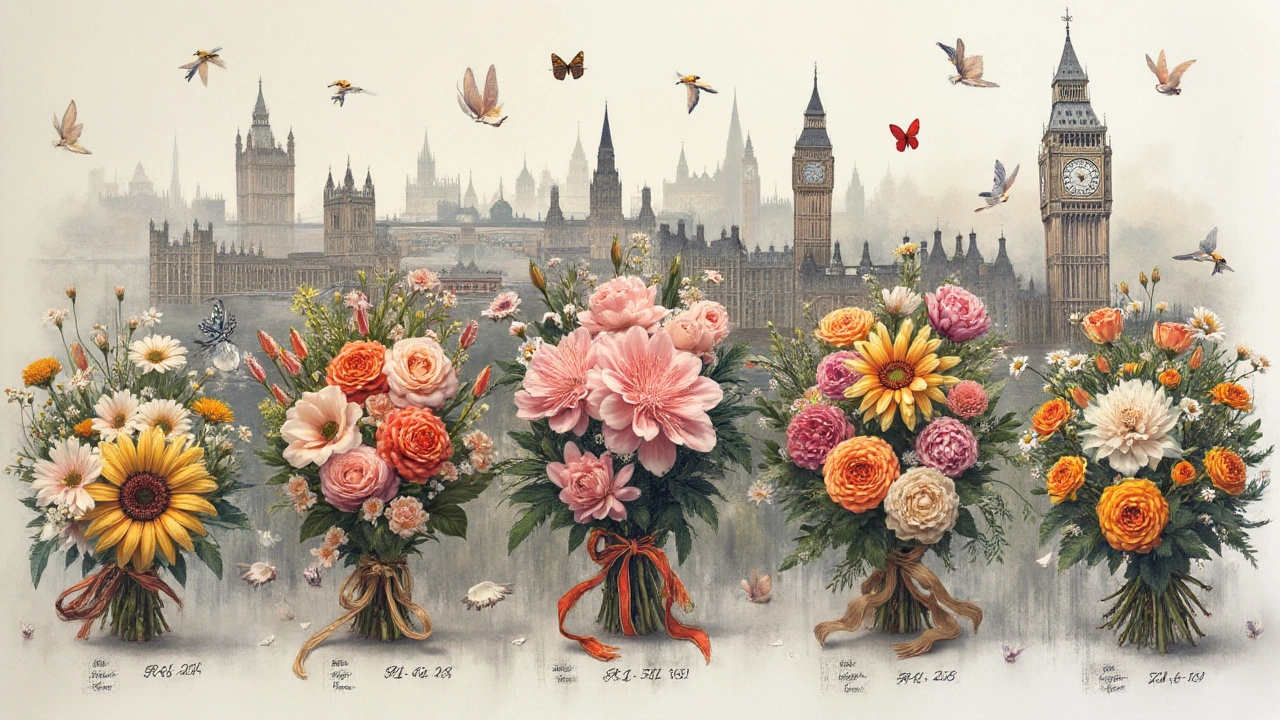The image of a bride gracefully walking down the aisle, adorned with a cascade of flowers, captures a moment both timeless and deeply personal. This tradition, steeped in history and meaning, is more than just a visual treat; it's a form of storytelling, a nod to the past, and a promise for the future. Have you ever wondered why flowers are an essential part of this beautiful ritual?
Journey with us as we delve into the fascinating world of bridal bouquets. From their historical significance to the unique ways brides today bring their own touch to this enduring custom, each bouquet tells a story. Whether you wish to honor tradition or create a statement that reflects your individuality, the choices are as boundless as your imagination.
- Historical Roots of Bridal Bouquets
- Symbolism of Wedding Flowers
- Evolution of Bouquet Styles
- Tips for Choosing Your Bridal Flowers
Historical Roots of Bridal Bouquets
Tracing the history of bridal bouquets takes us back to ancient times when flowers played an integral role in cultural rituals and ceremonies. The Greeks and Romans were among the earliest to incorporate flowers into wedding traditions. They believed that garlands made of herbs and blooms not only adorned the bride but also symbolized prosperity, fertility, and fidelity. This magical blend was thought to ward off bad spirits, ensuring a harmonious union. During these times, strong-scented herbs and spices, like dill and garlic, were favored for their protective properties. As time unfolded, this tradition echoed its way across cultures and centuries, witnessing an evolution in both its form and significance.
"Flowers are a proud assertion that a ray of beauty outvalues all the utilities of the world." – Ralph Waldo Emerson
The shift from aromatic herbs to the visually pleasing arrangements we recognize today began in the Medieval era. During this period, brides often carried flowers as a way to express their romantic state of mind. The Victorian era saw a further transformation as the language of flowers, known as floriography, captured the imaginations of many. Each flower carried a specific meaning; roses stood for love, lilies for purity, and ivy for fidelity. This trend solidified the bouquet's role as a customized message crafted with care and sentiment. What each bride held was not merely a collection of blooms but a carefully curated expression of dreams, wishes, and feelings.
As the tradition spread across continents, each culture infused its own interpretations, displaying both floral abundance and restraint. In some Eastern cultures, for instance, brides adorned with jasmine flowers would symbolize grace and elegance. Each bouquet tells a silent tale, reflective of the cultural tapestry it belongs to. With the reach of globalization, contemporary wedding bouquets have absorbed a fusion of traditional elements and modern design trends, marvelously accommodating diverse tastes and preferences. Hence, whether subtle or exuberant, the bouquet today remains a connection to the past, while highlighting a personalized flair that speaks to each bride's unique love story.
| Era | Significance of Flowers | Common Flowers Used |
|---|---|---|
| Ancient Greece & Rome | Luck and protection | Garlic, dill, rosemary |
| Victorian Era | Expression of feelings | Roses, lilies, violets |
| Modern Day | Personal expression and style | Diverse selections (roses, peonies, succulents) |

Symbolism of Wedding Flowers
Weddings are celebrations filled with rituals, and carrying a bridal bouquet is one of the oldest and most cherished traditions. Its roots, rich in symbolism, have been cultivated through various cultures for centuries. A bouquet is not just a cluster of beautiful blooms; every flower speaks its own language, known as floriography, which brides have used to express emotions and aspirations without uttering a single word. For instance, the timeless rose, a favorite choice across weddings worldwide, symbolizes love and passion, with red roses being a universal emblem of deep affection. Not just the type, but even the color of flowers plays a crucial role. White, for purity; pink, for grace; and blue, for serenity, creating a bouquet that reflects the couple's unique story.
Historical nuances have also influenced the choice of wedding flowers. In ancient Roman times, brides carried garlands signifying fertility and hope, while during the Victorian era, each flower was carefully chosen to convey specific sentiments. The meaning behind blooms like baby's breath, representing innocence, and ivy, signifying fidelity, highlights how floral arrangements are deeply personal choices harmonized with historical beliefs. Often, the inclusion of myrtle in a bride's bouquet is not just a nod to tradition but an homage to the plant’s standing as an emblem of a happy marriage. The use of these flowers speaks volumes about hope, love, and prosperity.
Today's couples continue to imbue their wedding flowers with personal significance, tapping into this age-old practice. Many brides choose blooms that resonate with family traditions or reflect shared adventures with their partners. The language of flowers creates an intimate dialogue on a day when words often fall short. Emphasizing the sentiment, renowned wedding florist Sarah Campbell states,
"Flowers are nature's poets—they speak a language that transcends time and cultural barriers, infusing weddings with a personal touch that’s beautifully unique to every couple."Beyond the bouquets, floral embellishments within the ceremony venue echo similar sentiments, transforming the space into a tapestry of emotion and intent, expertly woven together with flora.
For those planning their weddings, understanding the nuances of flower symbolism offers a delightful and imaginative way to infuse meaning into their special day. Not only does it contribute to the aesthetic, but it also layers the ceremony with a depth of feeling that guests can sense and appreciate. Whether a bouquet is traditional or contemporary, the story it tells is often what makes wedding flowers unforgettable. This enduring wedding custom is cherished not merely for its allure but for the silent testament of love and hope it conveys, grounded in human feelings and shared cultural heritage.

Evolution of Bouquet Styles
The journey of bridal bouquet styles tells a tale as enchanting as the weddings themselves. These delightful floral arrangements have transitioned through time, mirroring the changing tides of history, fashion, and personal expression. In eras past, brides carried herbs and spices, such as dill and garlic, thought to fend off evil spirits and imbue the wedding with vitality and love. By the Victorian era, however, flowers began to take center stage, a shift largely attributed to the iconic Queen Victoria herself, who popularized the idea of a wedding bouquet composed of blooms that conveyed specific meanings, known as floriography.
As we ushered in the 20th century, the opulent floral arrangements of the late 19th century gave way to a newfound simplicity. Brides in the 1920s preferred to mirror the Art Deco movement, with long, cascading bouquets featuring an array of exotic and native flowers, such as ferns and orchids, complemented by flowing ribbons. This style spoke not just of elegance but of an exuberance that celebrated an era of innovation and change. Bridal bouquets started to become lighter in the post-war years, with the 1950s favoring the delicate hand-tied posies and round bouquets, succinctly capturing an era of romance and tradition.
The 21st century has witnessed an enthralling blend of the old and new, as contemporary brides seek unique ways to personalize their wedding flowers. Popular trends today include rustic wildflower bouquets that mirror a bohemian soul, and monochromatic modern arrangements that exude sophistication and simplicity. What's fascinating is the revival of heirloom blooms, reflecting a deep appreciation for nostalgia. This period also embraces an eco-conscious approach; many brides now choose locally sourced and seasonal flowers, aware that every choice can impact our planet. This personalization and awareness offer a beautiful juxtaposition of elegance and responsibility that defines the modern bride’s style.
“Bouquets have become more than an accessory; they're a part of a bride’s expressive, personal journey,” says Hannah Martin, a renowned florist known for her innovative designs. “Their style choices reveal a lot about their hopes and the statements they wish to make,” she adds, emphasizing how much this aspect of weddings has evolved to be a reflection of personal values and tastes.
The diversity today is truly exhilarating, and it's not uncommon to see brides breaking free from traditional norms entirely, incorporating feathers, brooches, or even paper flowers into their bridal bouquet. Moving away from convention, many couples now opt for seasonal blooms that tell a story of their journey together, weaving in elements that hold personal significance. Perhaps it’s the lavender from the field of their engagement or the wildflowers that remind them of their first hike as a couple. Each choice crafts a narrative unique to the couple, transforming the bouquet from a mere accessory to a cherished symbol of their love and future.

Tips for Choosing Your Bridal Flowers
When it comes to selecting the perfect bouquet for your wedding day, the choices can seem overwhelming. However, with a bit of understanding and foresight, the task becomes a joyous exploration of personal style and tradition. The first step is to familiarize yourself with different flower types and their meanings. Many brides find it helpful to start by identifying a few key flowers they love, those that align with the wedding theme, or hold personal significance. Roses symbolize love and passion, lilies denote purity, and daisies bring a sense of innocence and hope. Such meanings can enhance the emotional depth of your special day.
Another factor to consider is the season of your wedding, as certain wedding flowers may be more readily available and affordable depending on the time of year. Spring and summer nuptials offer a wider palette with peonies, hydrangeas, and tulips in abundance, while autumn and winter weddings might spotlight rich hues of chrysanthemums and amaryllis. Consulting with a florist can provide invaluable insights into which blooms are at their prime, ensuring both beauty and freshness. Additionally, a bridal bouquet should complement the gown and venue. A rustic barn wedding might call for wildflowers, while an elegant ballroom might be best served by classic roses or orchids.
Budget is another crucial consideration creating a magnificent bouquet that doesn’t stretch the finances. A larger, more extravagant bouquet can be crafted by mixing high-priced flowers with more budget-friendly options, allowing for an opulent appearance without breaking the bank. Opting for florals that are in season or sourced locally often reduces costs substantially.
"Efforts to support local growers not only highlight unique regional varieties but also enhance a sense of community," says floral designer Jenna Marquez.Creative arrangements and unique foliage such as eucalyptus and ferns can add volume and interest without dramatically increasing expense.
Personalization adds a meaningful touch to your arrangement. You might consider incorporating a family heirloom into the bouquet handle, like a vintage brooch or lace from your mother's wedding dress. Additionally, consider scents that evoke cherished memories or spiritual connections. Strongly scented flowers like gardenias or lavender can carry a fragrance memory that lasts a lifetime. Do not overlook the power of color either; it sets the tone for your event and can be harmonized with bridesmaids’ dresses, table settings, and overall theme.
Ultimately, the selection of your bridal bouquet is a personal expression bound only by your creativity and desires. Consulting with experienced florists, using inspiration boards, and viewing previous work can provide guidance in sculpting a vision that resonates with your essence. Embracing this process thoughtfully not only brings fulfillment but can ensure that your choice remains an enduring symbol of your unique and beautiful union.

